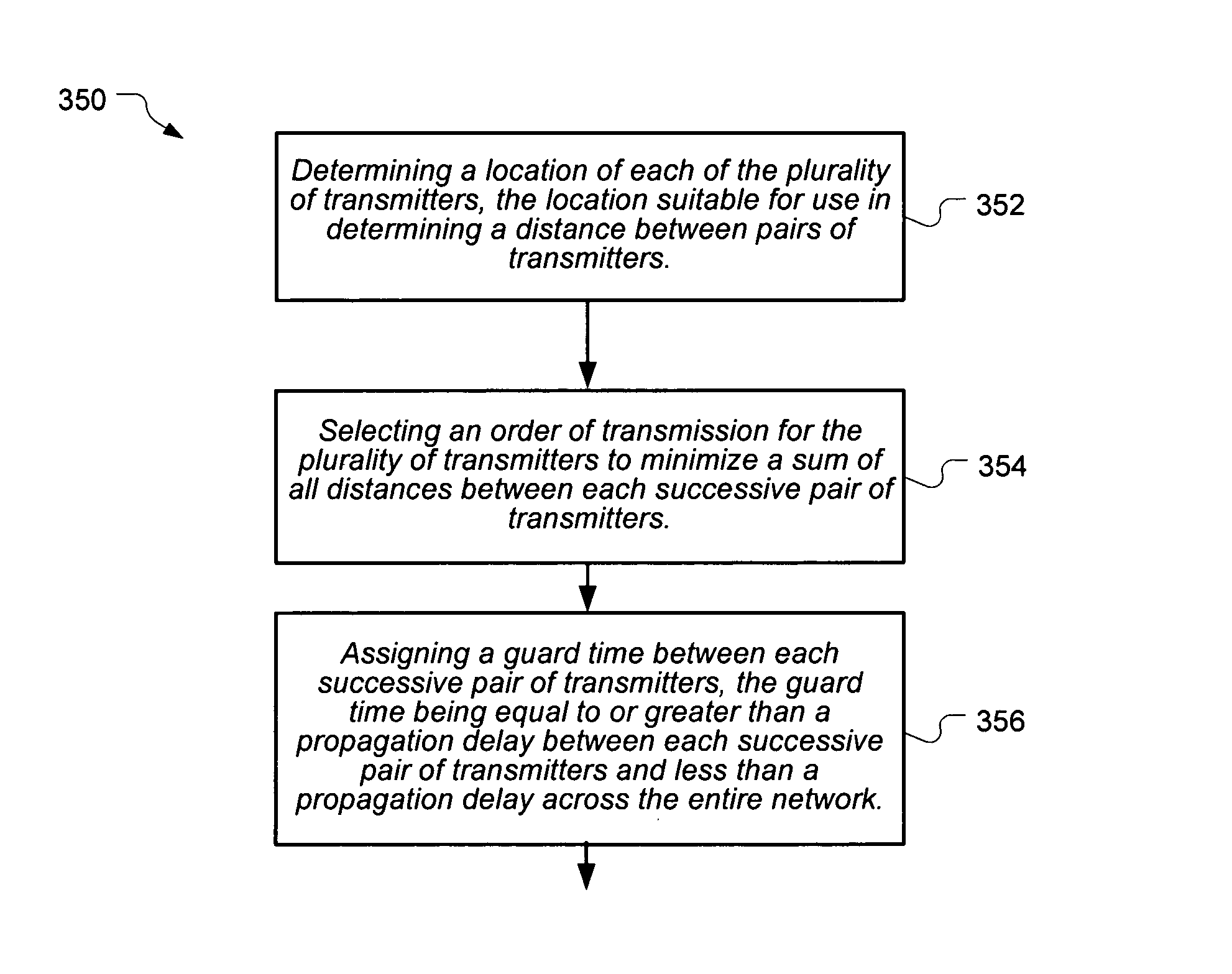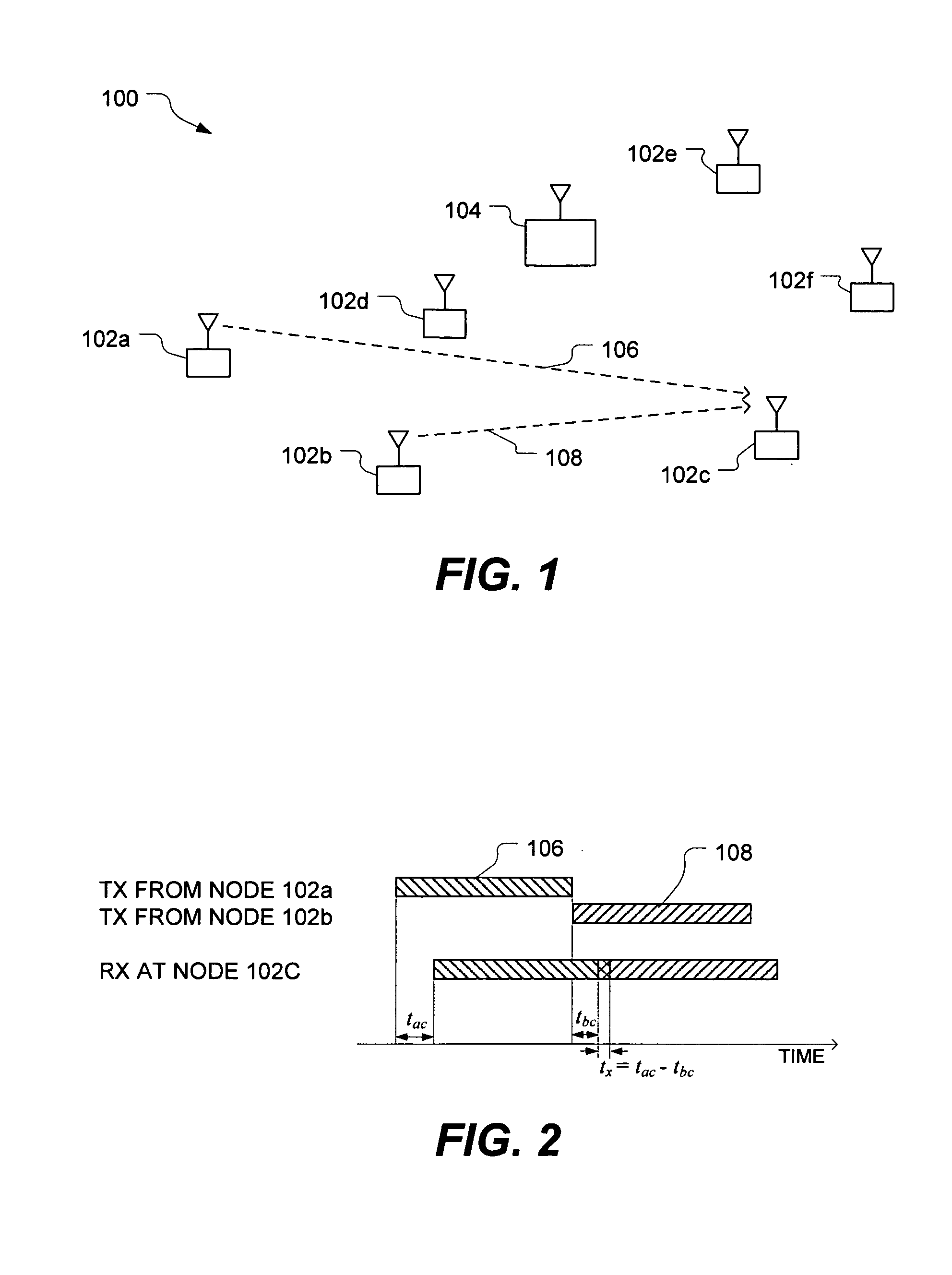Transmission scheduling for TDMA networks
a technology of transmission scheduling and tdma network, which is applied in the direction of radio transmission, synchronisation arrangement, electrical equipment, etc., can solve the problems of reducing the efficiency of the communication network, losing channel capacity, and communication signals moving at a finite velocity
- Summary
- Abstract
- Description
- Claims
- Application Information
AI Technical Summary
Problems solved by technology
Method used
Image
Examples
Embodiment Construction
[0018]Reference will now be made to the exemplary embodiments illustrated in the drawings, and specific language will be used herein to describe the same. It will nevertheless be understood that no limitation of the scope of the invention is thereby intended. Alterations and further modifications of the inventive features illustrated herein, and additional applications of the principles of the invention as illustrated herein, which would occur to one skilled in the relevant art and having possession of this disclosure, are to be considered within the scope of the invention.
[0019]FIG. 1 illustrates a time division multiple access (TDMA) system in accordance with an embodiment of the present invention. The system, shown generally at 100, includes a plurality of transmitter units 102, each of which can transmit data during a dynamically assigned time slot. A scheduler 104 is in communication with the plurality of transmitter units, and dynamically assigns time slots to the plurality of...
PUM
 Login to View More
Login to View More Abstract
Description
Claims
Application Information
 Login to View More
Login to View More - R&D
- Intellectual Property
- Life Sciences
- Materials
- Tech Scout
- Unparalleled Data Quality
- Higher Quality Content
- 60% Fewer Hallucinations
Browse by: Latest US Patents, China's latest patents, Technical Efficacy Thesaurus, Application Domain, Technology Topic, Popular Technical Reports.
© 2025 PatSnap. All rights reserved.Legal|Privacy policy|Modern Slavery Act Transparency Statement|Sitemap|About US| Contact US: help@patsnap.com



